We mainly talk about Japan’s rich culture and traditions. But we barely discuss famous Japanese artists, who innovated several painting styles and techniques.
Who enlightened millions of people, who endorsed and also wonderfully portrayed Japanese history and customs in their art.
Despite discovering art styles that even Westerners follow, these famous Japanese artists didn’t get their due love and recognition.
Here’s our attempt to appreciate these famous artists of Japan, who have produced some iconic and famous paintings around the world.
Table of contents
1 . Kawanabe Kyosai

Kawanabe Kyosai was one of the most prolific and skillful traditional painters Japan has ever produced.
At six, he joined the school run by Ukiyo-e master “Utagawa Kuniyoshi”.
Later, he learned traditional Japanese painting at the Kano painting school.
He was named “The Painting Demon” because of his obsession with bizarre activities.
However, he left the school after the death of his instructor.
At nine, he came across the severed head of a man in the Kanda river. He pulled it out and brought it home to sketch.
And that event left a strange impression on young Kyosai; who later produced pieces of artwork depicting dark elements.
Because he was educated in anti-academic institutes and traditional Kano schools, his work would reflect both traditional and modern flair.
Kawanabe was one of the famous artists of Japan whose work was also displayed in world exhibitions during the second half of the 19th century.
Those were satirical, which once made him see the doors of the detention camp. However, he also produced critically acclaimed folklore artworks worth thousands of dollars.
2. Yokoyama Taikan
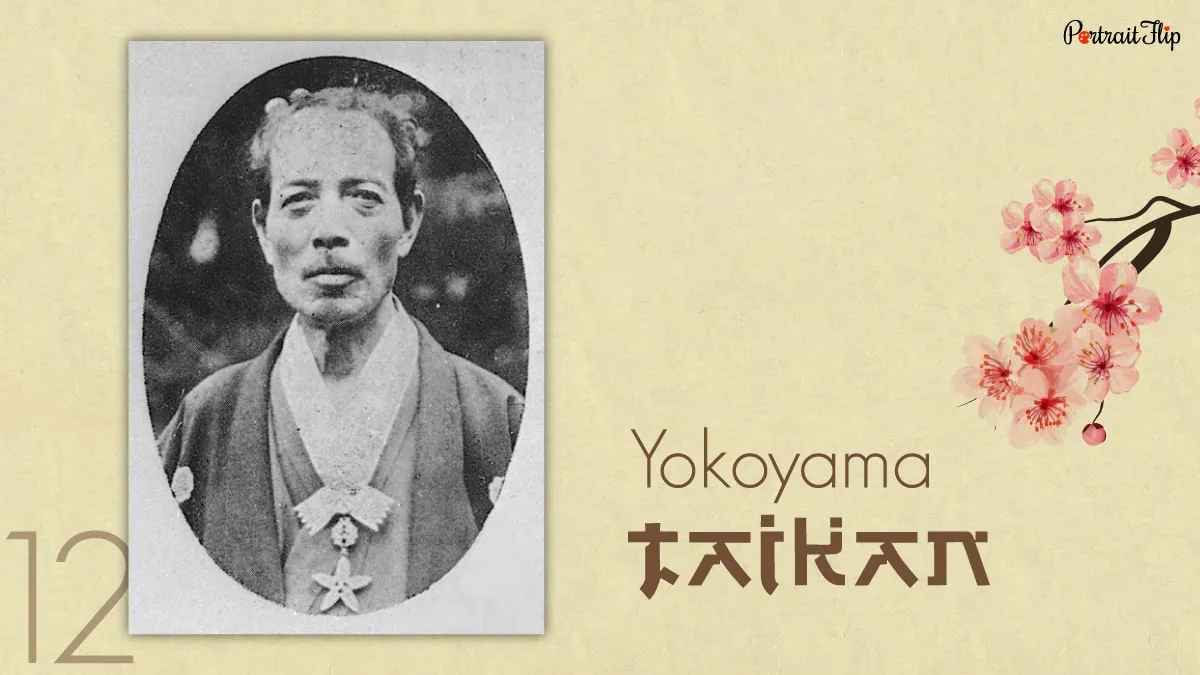
Yokoyama Taikan was the artist name of Sakai Hidemaro, who contributed to the revitalization of traditional Japanese painting in the modern era.
Taikan was the creator of the heavily criticized Japanese painting technique named “Nihonga”.
In 1896, he started teaching design at the school but was terminated by the principal.
Taikan was one of the few Japanese artists who were participants in reviving the Japan Fine Art Academy; that was falling after the death of Okakura Kakuzō in 1913.
In later years, he spent most of his time with Nihonga Technique, which focused on softened and blurred images.
And fell for abstract painting, which persuaded him to paint exclusively with monochrome ink.
Audiences would recognize him for his proficiency in the use of various tones and shades of black.
Later, he went on to dedicate his life to continue innovating the Nihonga practice for future generations.
3. Kawase Hasui
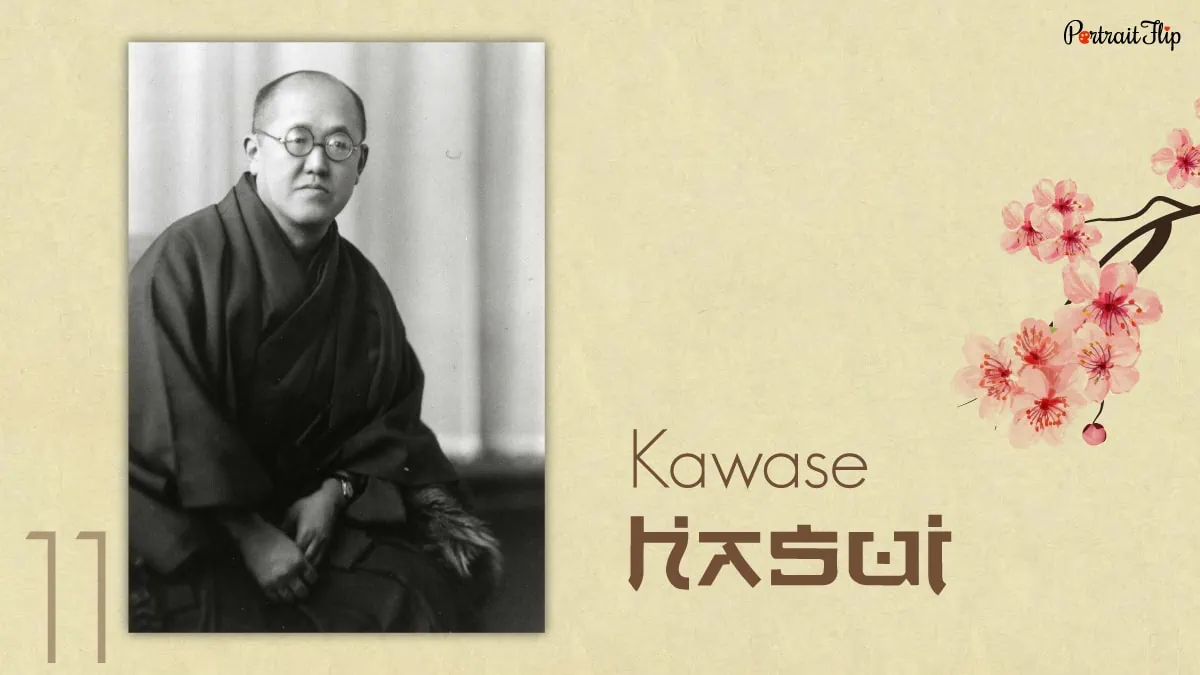
Kawase Hasui was one of the famous Japanese artists, also known as a prominent designer of the Shin-Hanga.
The movement, where artists depicted traditional subjects in a way influenced by western art.
His artworks were mostly landscapes. But they also displayed his love for the soft breeze, atmospheric effects, and natural lighting.
Most of his naturescape and landscape works were based on sketches and watercolor which were made in Tokyo and around Japan when he traveled.
Hasui was a prolific artist and created approximately 620 prints, including the most famous falling snow print.
And he was honored and recognized as a Living National Treasure for his contribution to Japanese culture.
4. Hiroshi Senju

Hiroshi Senju is a talented Japanese painter best known for his waterfall paintings.
A renowned Japanese artist, who completed the MFA program at Tokyo University of the Arts in 1984.
He got his first success when his gigantic waterfall paintings gained massive love in about 1991.
And he was one of the few Japanese artists who was recognized by the general public as his paintings were hung in corporate and public buildings.
In 1997, he became the first Asian to receive an Honourable Mention Award at the 46th Venice Biennale.
His art is said to incorporate elements of traditional Japanese painting with a “minimal visual language based on Abstract Expressionism.”
5. Utagawa Kuniyoshi

Like other famous Japanese artists, Utagawa contributed largely to the Ukiyo-e style.
He is popular for portraying the battle of legendary samurai, who frequently prefer to portray darkness and evil.
His experience in his father’s business, who was a silk dyer, taught him various aspects of color and textile patterns.
He proved his drawing skills when he was six.
Furthermore, he was officially admitted to Toyokuni’s studio in 1811 and became one of his chief pupils.
He remained an apprentice until 1814, when he began to recognize himself as an independent artist.
His works display various genres, including some gorgeous landscapes and categories from the Ukiyo-e style.
6. Sesshu Toyo
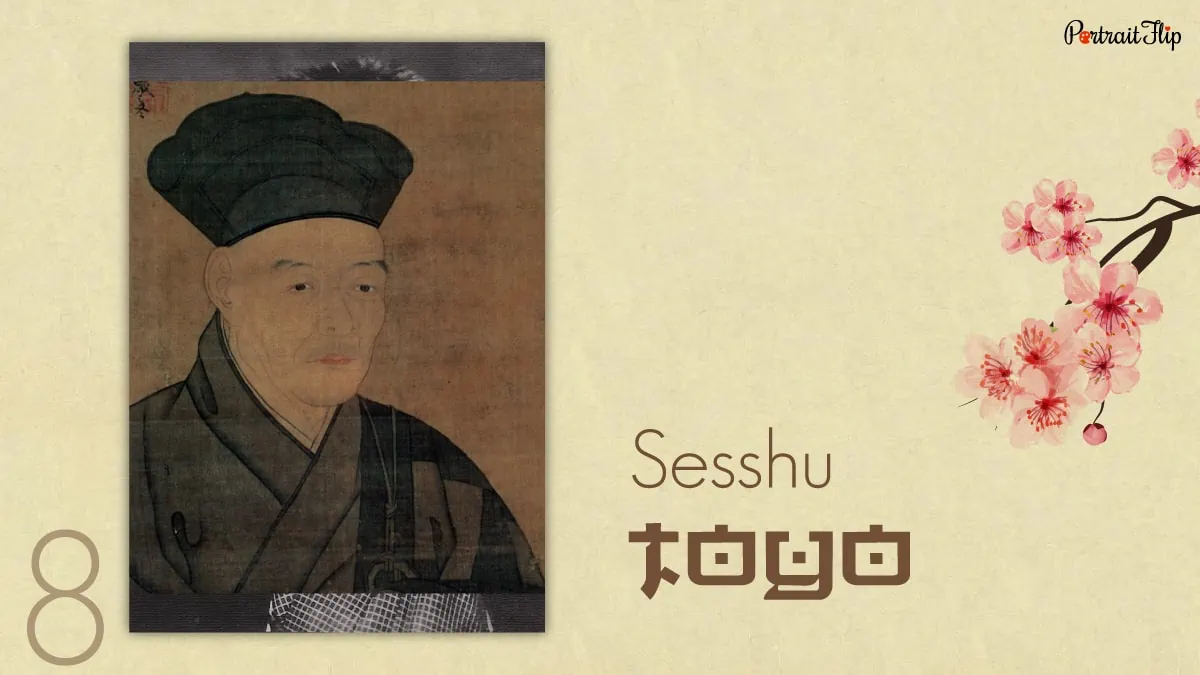
He was one of the oldest and most famous Japanese artists in Japanese history.
His distinctively Japanese style reflects Zen Buddhist aesthetics.
Most of his works display landscapes, birds, and flowers; Zen Buddhist beliefs, flattened perspective, and emphatic lines.
His works were also highly inspired by the Chinese Song Dynasty.
That’s why the next generation of artists was highly influenced by his style.
Many schools would offer him the principal’s role due to his phenomenal and wide painting.
Because of his keen interest in Zen Buddhism, personal interpretation, and economical expression, he was able to build his legacy.
7. Ogata Korin

Ogata Korin was one of the masters of the Sotatsu-Koetsu school of decorative painting.
He was particularly known for his screen paintings, lacquer work, and textile designs.
Having received a considerable inheritance from his father, the artist spent his early years in pursuit of pleasure.
Once, he was banished from Kyoto as he violated the law associated with forbidding the use of gold and silver among common people.
Due to this, he lost all his inheritance, and what happened after that became history.
Earlier, he had studied painting for several years, which helped him to create marvelous paintings when he began his art career.
Many of his artworks were heavily influenced by natural elements such as flowers, grass, the seasons, and water.
A few other popular paintings were attributed to the traditional Kano style.
8. Tomioka Tessai

Tomioka Tessai, a famous Japanese artist of Bunjinga, was deeply influenced by Confucianism.
He learned to paint by himself, despite knowing the basics from Osumi Nanko and Ukita Ikkei.
Before becoming a professional, he was a Shinto priest at the Isonokami Shrine.
As a famous Japanese painter, most of his works were based on classical Japanese and Chinese literature.
Those paintings were recognized for their use of bold brush strokes and large-scale compositions.
Despite being influenced by classical Japanese and Chinese literature, he was recognized for his vibrant colors, patterns, and large-scale compositions.
9. Kano Eitoku
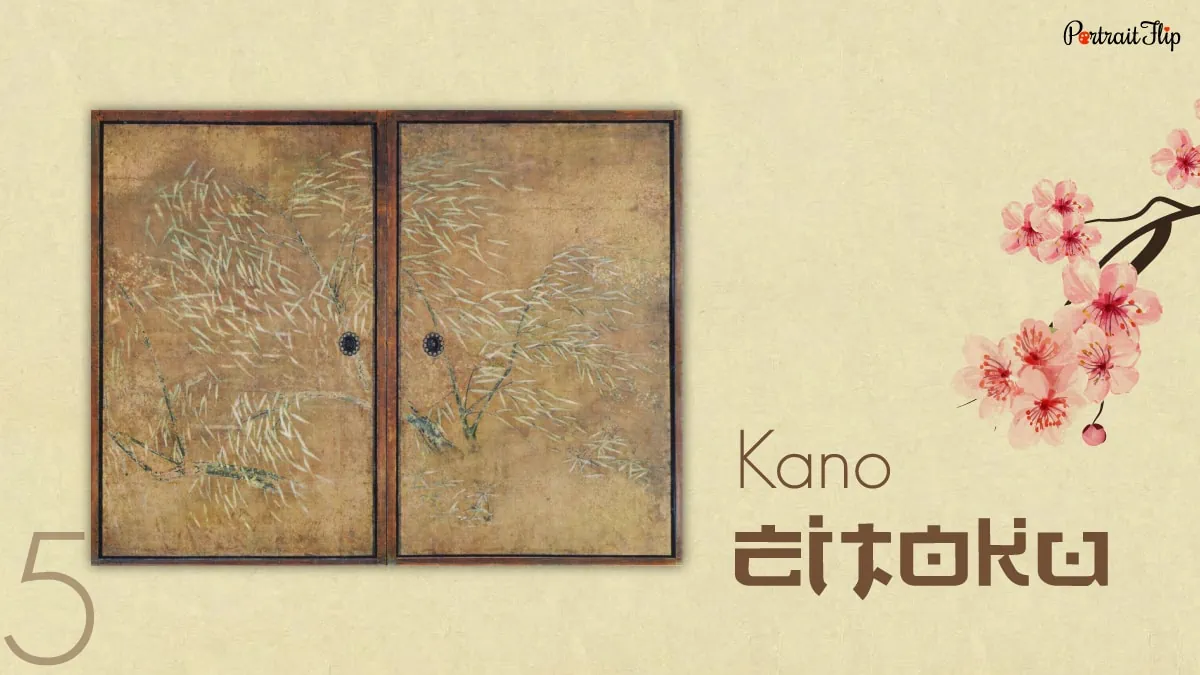
Kanō Eitoku was the fifth generation scion of the famous Kanō family of Japanese artists and creator of the Azuchi-Momoyama period
By introducing a gold-leaf ground, he made the Kanō style yet more monumental and gorgeous.
His motifs depict elements of nature, mostly birds, animals, trees, flowers, and rocks.
As the leading Japanese artist, mainly from the Azuchi-Momoyama period, he was commissioned by military rulers Oda Nobunaga and Toyotomi Hideyoshi.
He inspired renowned artists such as Mitsunobu and Takanobu due to his proficiency in turning intricate details into beautiful pieces.
10. Kitagawa Utamaro

The greatest ukiyo-e artist, Utamaro, was renowned for his extraordinary observation and compositions, particularly of voluptuous female beauties.
Under the alias Toyoaki, Utamaro preferred paintings to generic woodblock prints of ladies.
Despite being one of Japan’s most renowned painters, he still took the time to learn how to illustrate books and study nature.
He was detained for 15 days in 1804 for creating prints that were illegally based on the military emperor Toyotomi Hid from the sixteenth century. He passed away two years later.
But by the middle of the nineteenth century, his works had reached Europe, where they were particularly popular in France.
11. Yayoi Kusama

Next, we’ve got Yayoi Kusama, one of the famous female artists who is also a self-described “obsessional artist.”
Her creative journey started when she started having hallucinations, when often such episodes would manifest into paintings.
These artworks were frequently featured as fields of dots, which gives us an insight into how Kusama perceived the world around her.
Tens of thousands of tiny marks that were endlessly and obsessively reproduced across gigantic canvases without consideration for the edges of the canvas.
The majority of works examine the technical and psychological limits of painting and the artist.
Moreover, as the observer, one might get virtually hypnotized by the marks’ seemingly unending repetition.
The growing minimalist movement was influenced by her art.
But with time, pop art and performance art became more prevalent in her work and aesthetic.
She has been creating distinctive and unforgettable art installations all around the world since the 1970s.
Her Infinity Mirror Rooms are without a doubt the most recognizable and well-liked.
She turns her earlier pieces into ongoing encounters for viewers by using mirrors.
12. Katsushika Hokusai
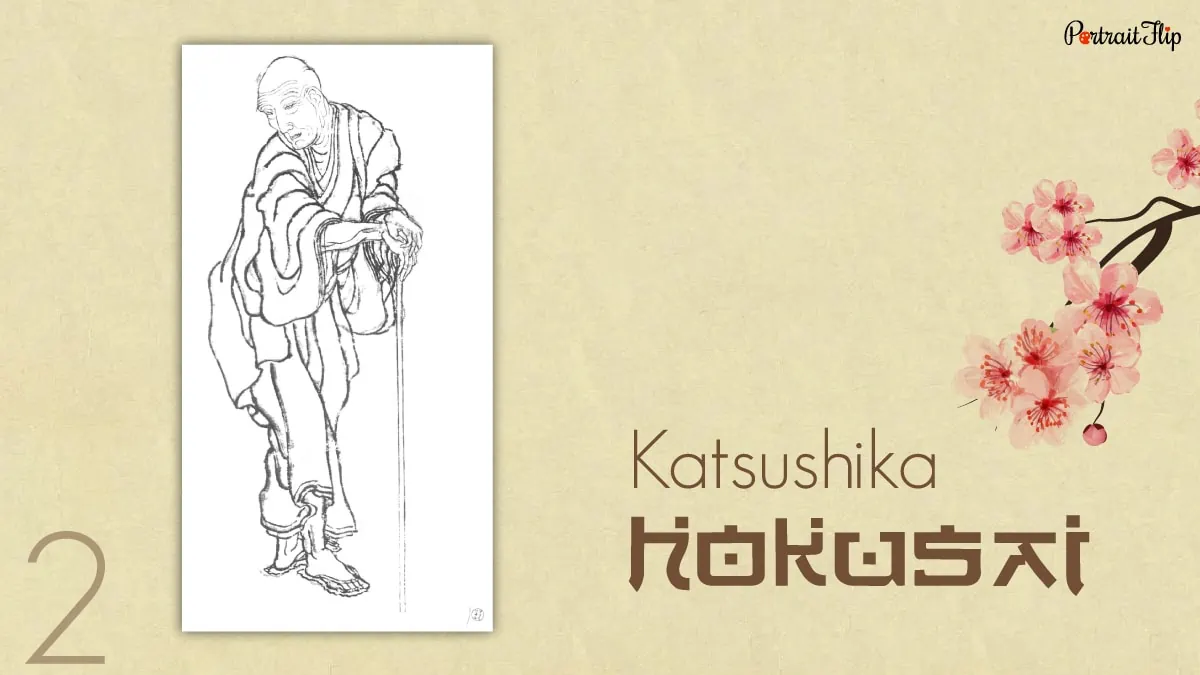
Katsushika Hokusai was one of the most versatile and famous Japanese artists, whose work also impacted the students of the ukiyo-e school.
His initial works were inspired by ukiyo-e art. That included single-sheet prints of landscape, handmade portraits, and artistic prints known as Surimono.
As an artist, he also had a keen interest in other realms—classical themes of the samurai and Chinese subjects.
His early training helped him to carve his niche and to become an extraordinary Japanese artist.
He would work as a clerk in a lending bookshop when he was 15 years old.
Not only that helped him become today’s renowned Japanese painter, but also enhanced his printmaking skills.
As he grew, he became a pupil of the leading ukiyo-e master—Katsukawa Shunsho.
His finest work in painting, printmaking, theaters, and other genres in different fields, has given him worldwide fame. And often called the most influential ukiyo-e painter of all time.
His works were featured in countless galleries and merchandise across the world. That included ‘Thirty-six views of Mt Fuji’ and ‘The Great Wave of Kanagawa’.
13. Takashi Murakami

Takashi Murakami, a man who needs no introduction, is a famous Japanese artist and entrepreneur.
He is widely recognized for his ability to adapt the aesthetics of Japanese traditional art to operate within the context of popular culture.
He studied Japanese painting at the Tokyo National University of Fine Arts and Music in 1993. And he made his European debut in 1995 after completing the course.
Takashi is among a few famous Japanese artists whose artworks and sculptures were featured at the second Asia-Pacific Triennial of Contemporary Art at the Queensland Art Gallery in Brisbane, Australia.
Not only is he recognized as Japan’s favorite artist, but he is also referred to as the father of the Superflat art movement.
His vibrant and distinct artwork is influenced by anime and manga.
Takashi Murakami is one of the famous artists of Japan who rose to international prominence as a long-term collaborator with the luxury brand Louis Vuitton.
Since then, he has collaborated with a wide range of well-known brands and celebrities, including Issey Miyake, Kanye West, and Pharrell Williams.
In Conclusion
These famous Japanese artists’ contribution to world art is remarkable. They are the reason behind the extension of various Japanese art styles—Nihonga, Ukiyo-e, and Sumi-e.
Not only you’d see their influence on western art cultures and styles, but also their works displayed in the world’s renowned art galleries and museums.
These famous Japanese artists rewrote Japan’s art history and made it significant throughout the boundaries.
Hello, readers!
Thank you for your time.
I hope you found this information useful.
I’ve listed 13 famous artists of Japan who not only made their names in the world of art but also inspired thousands of painters.
However, if you believe I missed something or that I should have included more pertinent information, please let me know in the comments area.
Talking about handmade paintings, we also replace faces in renowned paintings and deliver them to our customer’s doorsteps. Don’t worry we do it ethically, in order to add fun and interest to your wall.
Do you want to try it? Explore our page—replace faces in paintings
So what are you waiting for?
Frequently Asked Questions
Kawanabe Kyosai was one of the most prolific and skillful traditional painters Japan has ever produced.
Kawase Hasui was a prominent name in Japanese landscape art and a producer of hundreds of paintings.
Hiroshi Senju is a talented Japanese painter best known for his waterfall paintings.
Ogata Korin was particularly known for his screen paintings, lacquer work, and textile designs.
Yayoi Kusama, a produced of 27 pieces of art, is the most famous female Japanese painter.
Takashi Murakami was the founder of the Superflat art movement.




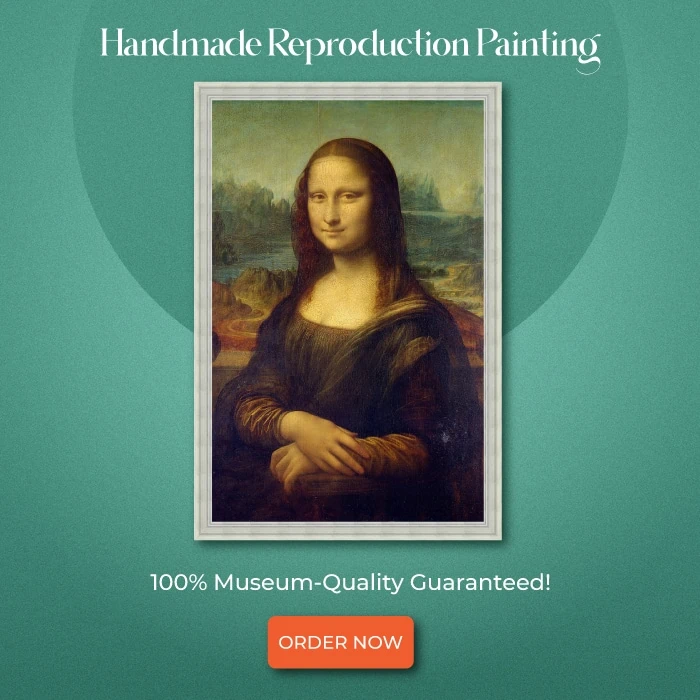

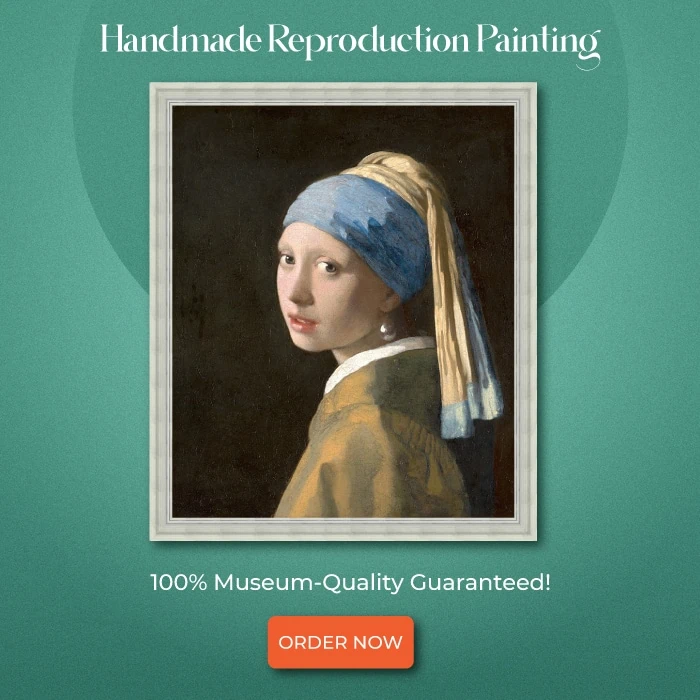
Loved this detailed article on Japanese painters. I love and follow painters like Van Gogh, Kahlo, Munch right now am in love with Gustav Klimt, Raja Ravi Varma and try and visit various art and painting exhibitions to appreciate local painters. Our local painters are DAMN GOOD.
Hopefully, they’ll get famous fast.